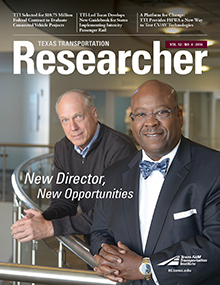The world seems to be moving faster. Our transportation system, however, seems to be slowing down.
Expanding economies place increasing demands on our current transportation system. While economic growth is good, increased freight and commuter traffic is filling roadways that, when built 50 years ago, seemed luxurious in their emptiness. Given this reality, how can we continue to move people and goods between major metropolitan areas reliably, safely and efficiently?
Intercity passenger rail (ICPR) has, until very recently, been the domain of Amtrak, owned and operated by the National Railroad Passenger Corporation. Because Amtrak relies on congressional appropriations to function, it’s limited in how much service it can provide. In 2008, the Passenger Rail Investment and Improvement Act (PRIIA) created mechanisms for the U.S. Department of Transportation to establish strategic partnerships with states interested in working with Amtrak and others on potentially implementing ICPR services.
“PRIIA required states to develop formal state rail plans and talk with local stakeholders to determine their needs in formulating those plans,” explains Texas A&M Transportation Institute (TTI) Associate Research Scientist Curtis Morgan, who heads TTI’s Multimodal Freight Program. “Guidance for how to do that has been lacking. And that’s what our project was all about.”
Morgan led a multidisciplinary research team consisting of TTI, Ohio University, David P. Simpson Consultants, ESH Consult and the Law Office of Walter E. Zullig, Jr., Esq., to develop the National Cooperative Rail Research Program’s Guidebook for Intercity Passenger Rail Service and Development. The team researched existing best practices and conducted targeted interviews to fill in knowledge gaps. They created a user-friendly, flexible set of guidelines for state officials, rail-service advocates and other interested parties to use when considering ICPR options.
“For more than 30 years, growth and innovation in our nation’s rail system have been primarily and most successfully associated with the movement of freight,” says Lawrence D. Goldstein, staff officer for the Transportation Research Board, which managed the project. “Since 2008, however, billions of federal and state dollars have been invested in intercity passenger rail, responding to opportunities and challenges arising from changing travel demand and other factors.”
Besides better organizing procedures, the guidebook also recognizes that each state has individualized resources and needs. While there is no one-size-fits-all approach, there are some questions every state must answer, and those form the core of the guide’s contents:
- What is the proposed route, and where will stations be located?
- How do we measure success operationally?
- What should our contracts with public agencies and the private-sector railroads look like?
- How do we optimize performance and provide maximum public benefit?
The answers to these questions are pragmatic and presented in the context of existing regulations, the current intercity passenger rail environment, and the past experiences of those who have built ICPR services. Interviews with national stakeholders — such as private- and public-sector operators, Amtrak, state departments of transportation, and private railroads — complement the team’s study of existing intercity rail lines. The result is a guidebook that covers all phases of a project, from visioning, planning and design to construction, operations and maintenance.
“Our research involved more than just collecting the best practices in one place,” says Morgan. “We also produced five targeted syntheses to fill in specific gaps in the industry’s practical knowledge.”
These areas, which are still emerging, include:
- liability and insurance requirements for new ICPR service,
- PRIIA Section 209 cost-formula transparency and an increasing level of detail between states and Amtrak,
- guidelines for developing robust and resilient ICPR services,
- ICPR performance measurement and quality assurance techniques, and
- the role and purpose of the U.S. Surface Transportation Board related to ICPR service.
A detailed discussion of each of these topics ensures users are fully aware of not only the planning and operational issues they’ll face, but also the broader contexts of accountability and policy they’ll need to consider. An appendix links readers to current research and regulatory documents providing the background knowledge for this growing area of transportation service.




